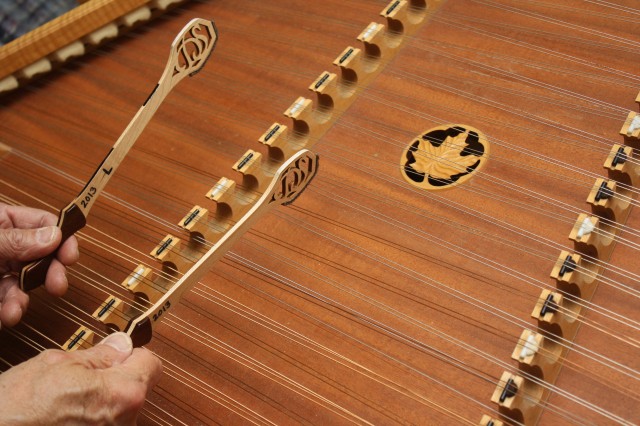Back in the late 1980s when I was excitedly collecting melodies from old folk hymn books, especially George Pullen Jackson’s scholarly books and the actual shape-note hymnals such as The Original Sacred Harp and The Southern Harmony (in those the tune is in the tenor, by the way), one of the hymns that really caught my attention was ‘Behold the Lamb of God’ --- and I made a ‘lead sheet’ for it in a singable, playable key.
But I’ve never made an arrangement of it for hammered dulcimer until now, when I turned the camera on and explored ways of making it sing on the instrument without the words but with the words in mind.
Here are some ideas that led to what you see and hear on the video:
1) It’s a pretty repetitious melody, with three phrases in each verse that are identical, so I decided to vary the arrangement by starting with single notes for the first half of the first verse and then adding some simple droning harmonies on the second half.
2) Between verses I didn’t want to move immediately into the next, so I improvised emotion-laden patterns of varied arpeggios.
3) I changed keys for the third and fourth verses, thus gradually raising the pitch range from near the bottom of the dulcimer to near the top.
4) I used relatively unusual chords, leaning heavily on the minor chords in this very minor song about the cross; in the phrase that repeats itself I chose to have the chords follow a ‘walk-down’ in the bass end: in the key of E minor that’s Em-D-C-Bm (notice how the letter names are going downward in the alphabet) to emphasize the gravity of the message of this strong six-verse text.
5) Although the piece moves fairly steadily through time, I made a point of phrasing the expression to meditate: slightly slowing down and speeding up as a response to ideas, and getting notably louder and softer as part of that flow of thought.
6) I decided to repeat the second half of the last phrase in each verse (as is often done in folk songs of this type) to prolong the contemplation.
7) I did special interpretive ornaments and melody variations rather than simply play the tune the same every time.
Shape-note harmonies are not like these, by the way. This is not a transcription of those --- they’re totally stark, more like the second half of the first verse --- but this is my own personal response in a much more romanticized approach. (And the very fact that this is instrumental rather than a capella vocal breaks all the rules of shape notes!)
If you’re interested, there’s a link here to the video and a lead sheet with similar chords (only in the easily singable key of E minor). All six verses of the anonymous text are in both the lead sheet and the Youtube description area.
[/embed]Behold-the-Lamb-of-God.pdf





Comments